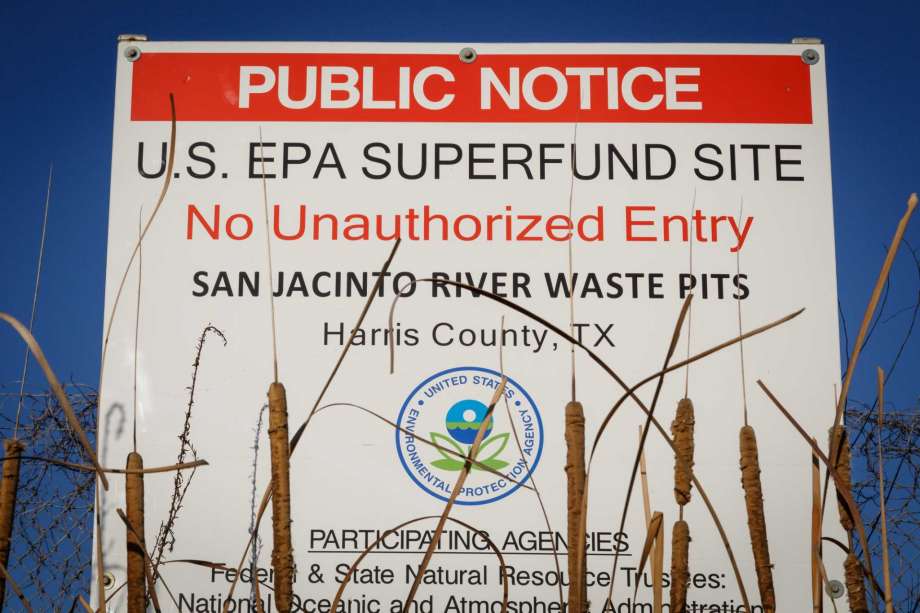Recovery from Harvey should include cleanup of the San Jacinto waste pits
Published 5:07 pm, Monday, September 4, 2017
Photo: Michael Paulsen, Staff
After Noah survived the great deluge, God placed a rainbow in the sky as an everlasting covenant with man, promising to never again punish the Earth with such a deadly flood.
Any rainbow sheen you may see today across the Gulf Coast floodwaters is no godly doing. Runoff from chemical plants, petroleum pipelines and at least a dozen Superfund sites risks transforming the destructive rain into a putrid stew filled with lead, arsenic and other toxic and carcinogenic chemicals.
So you can’t help but worry when looking at the pictures of the Vita Bella assisted-living center during Hurricane Harvey – an elderly woman calmly knitting in the Dickinson nursing home while the brown waters swirl around her feet.
They could have used an ark.
The image was shocking enough to hasten a rescue, but the damage may have already been done. After all, some of the worst flood hazards can’t be picked up by photograph.
“There’s no need to test it. It’s contaminated. There’s millions of contaminants,” Porfirio Villarreal, a spokesman for the city of Houston Health Department told the New York Times as to the floodwaters.
Nowhere is the risk more worrisome than the San Jacinto waste pits, which sit between the communities of Highlands and Channelview. One of the San Jacinto waste pits, covered by a temporary armored cap, was partially submerged in the river even before Hurricane Harvey. Now they’re totally engulfed.
Last year, the Army Corps of Engineers predicted the protective device might not be reliable “under very extreme hydrologic events which could erode a sizable portion of the cap.”
Harvey – which has been called a 1,000-year-flood – would certainly qualify. Now we have to worry that the cap was damaged and the toxic mess has spread downriver to Galveston Bay.
As part of the recovery efforts, Environmental Protection Agency Administrator Scott Pruitt should make time to visit the submerged pits, which were designated a federal Superfund site in 2008.
Pruitt has said he plans to create a “top-10 list” of key Superfund sites and target sites where “the risk of human exposure is not fully controlled.”
The pits fit the bill: They’ve been ravaged by weather and contain dioxin, a highly toxic chemical that increases the risk for several cancers, including lung cancer and non-Hodgkin’s lymphoma, and has been linked to birth defects, liver damage and dermatological disorders.
The EPA actually proposed a solution to the pits last year: Remove about 202,000 cubic yards of contaminated material at cost of nearly $100 million. Of course, the cost and nature of the remediation may have changed depending on whether the armored cap has been damaged.
Regardless, Pruitt should cut through the bureaucratic red tape that has slowed the cleanup of this site and act boldly in holding companies responsible for past contamination.
This site has been unsafe for over 60 years – longer than many Texans have been alive. It is time to finally clean up our river. Any Harvey recovery bill must fund this sort of ecological repair alongside the economic and infrastructure needs.
“For years our communities and local government have told the EPA it is not a matter of if, but when, a storm devastates the pits,” Jackie Young, executive director of the Texas Health and Environment Alliance, told the editorial board.
The federal government bears responsibility for Superfund sites like the San Jacinto waste pits, and it falls on Pruitt to uphold his part of that covenant.












